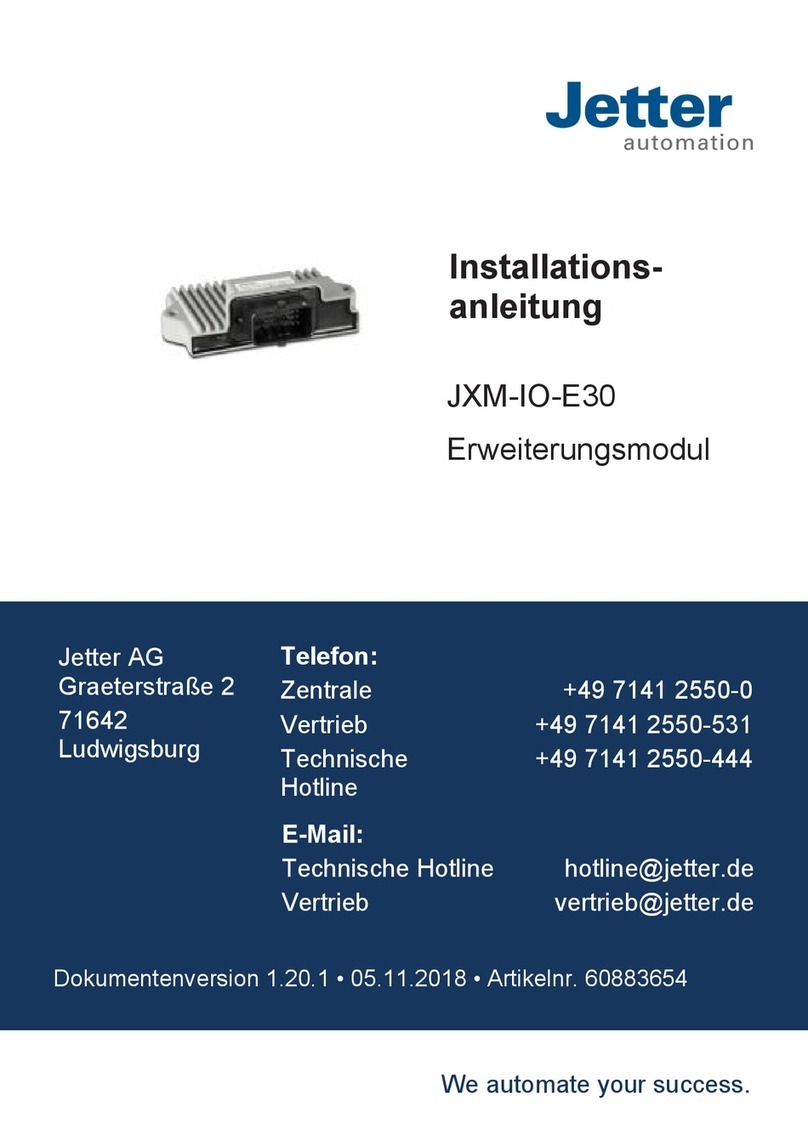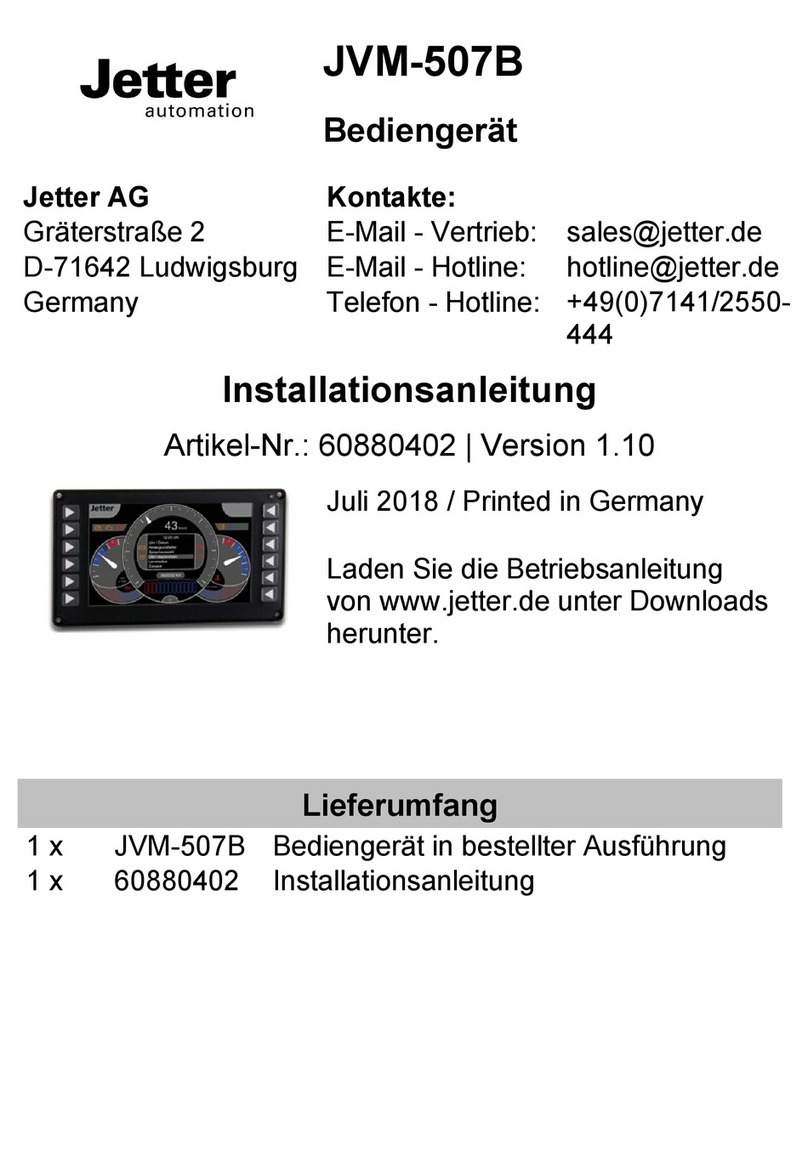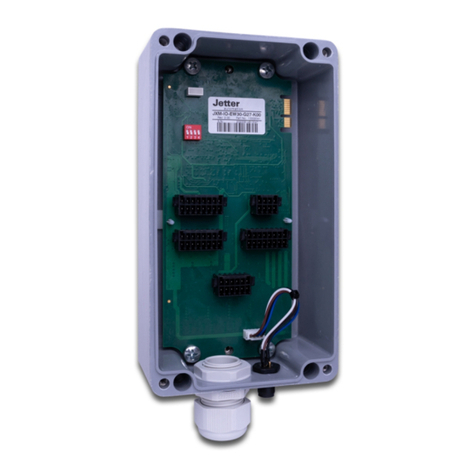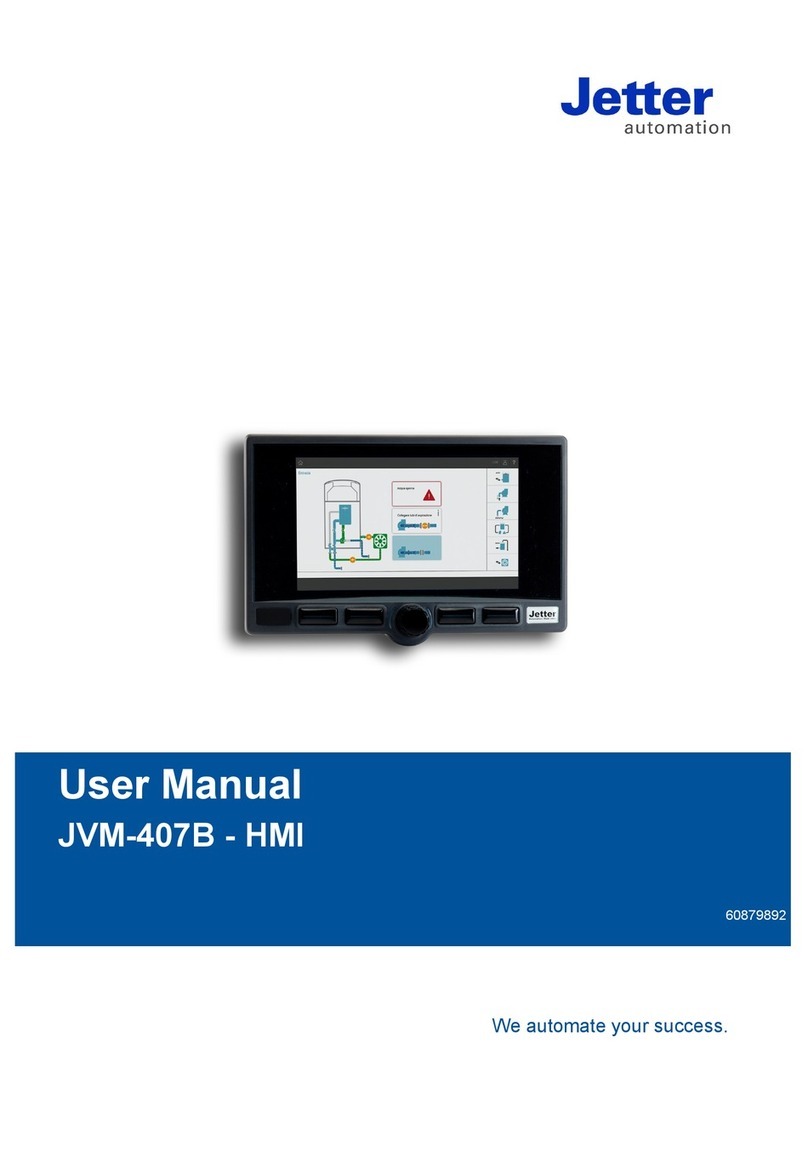
Jetter AG Table of contents
JX3-THI2-RTD-EI User Manual iii
Table of contents
1 Introduction .....................................................................................................................................5
1.1 Information on this document .................................................................................................. 5
1.2 Typographical conventions......................................................................................................5
2 Safety ...............................................................................................................................................6
2.1 General information.................................................................................................................6
2.2 Purpose ...................................................................................................................................6
2.2.1 Intended use................................................................................................................6
2.2.2 Usage other than intended ..........................................................................................6
2.3 Warnings used in this document ............................................................................................. 6
3 Product description ........................................................................................................................7
3.1 Design .....................................................................................................................................7
3.2 Functions.................................................................................................................................7
3.3 Status indication ......................................................................................................................8
3.3.1 Diagnostics capabilities by means of status indication................................................8
3.4 Nameplate ...............................................................................................................................8
3.5 Scope of delivery.....................................................................................................................9
4 Technical specifications...............................................................................................................10
4.1 Dimensions............................................................................................................................10
4.2 Environmental conditions ...................................................................................................... 10
4.3 Electrical properties...............................................................................................................11
4.4 Temperature inputs ............................................................................................................... 11
4.5 Mechanical specifications......................................................................................................11
4.6 EMC values ........................................................................................................................... 12
4.6.1 Enclosure ..................................................................................................................12
4.6.2 DC power supply inputs and outputs.........................................................................13
4.6.3 Shielded data and I/O lines .......................................................................................13
5 Mechanical installation.................................................................................................................14
5.1 Installing the expansion module on the DIN rail .................................................................... 14
5.2 Removing the expansion module from the DIN rail............................................................... 15
5.3 Dismounting the enclosure from the backplane module ....................................................... 16
6 Electrical connection ....................................................................................................................17
6.1 Temperature inputs X41, X42 ............................................................................................... 17
6.2 Connecting thermal sensors..................................................................................................17
6.3 Connection types of temperature sensors.............................................................................18

































